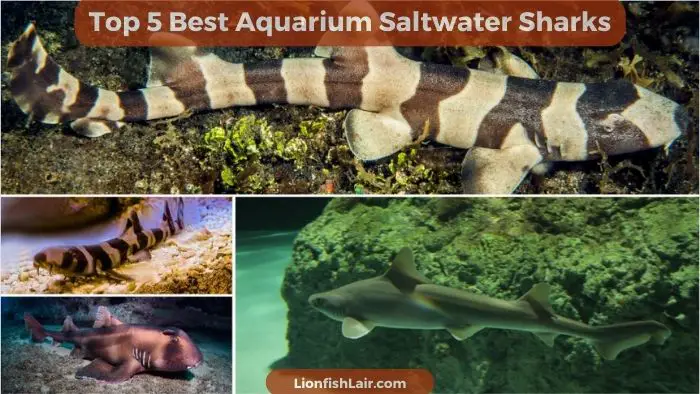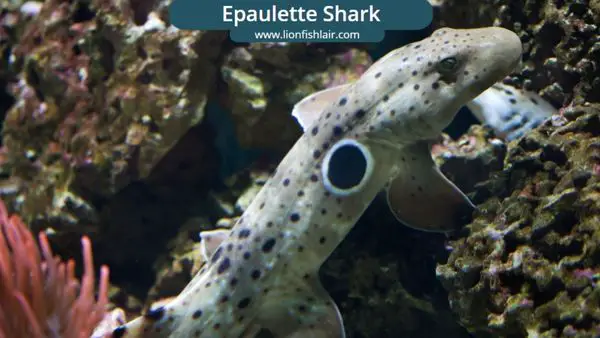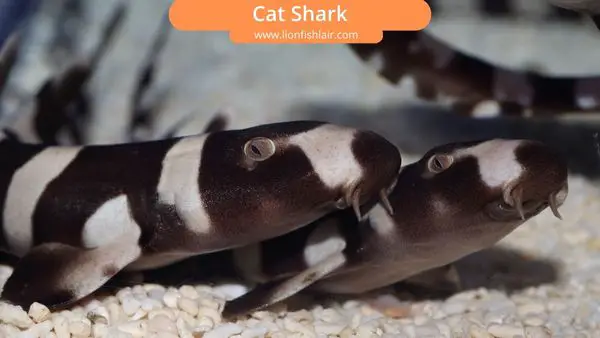For many people, not just fishkeeping enthusiasts, sharks are fascinating. As humans seem to have the preconceived idea that they are these bloodthirsty, menacing creatures that will kill almost immediately upon crossing paths with you.
However, this is far from reality – there are hundreds of saltwater shark species, with most being totally harmless to humans, and some being small enough to even keep in your own home aquarium!

Tiny shark species for home fish tanks do not exist, but there are certainly shark subspecies’ that are small enough to house in a home aquarium, provided it is large enough to realistically provide them with a good, stable home that mimics their natural environment.
Something else that is pretty neat about saltwater sharks is their hardiness - they are not the hardiest saltwater fish, but they are certainly robust and are not typically prone to disease.
There are some tiny shark species, such as the dwarf lantern shark (Etomopterus perryi), that only grow to 7.5 inches (19 cm) in length, but they typically reside in the deep ocean waters, making it impossible to replicate their natural environment.
There are some small shark species that will readily acclimate to the parameters of their home aquarium, meaning that they will not outgrow their surroundings.
It is important to note that saltwater sharks for home aquariums are hard to come by, as well as being hard to keep and manage. Many people think you can keep them in tanks as small as 75 gallons - this is not the case.
As you will see, the minimum tank size for these sharks is unrealistic for most hobbyists, which is why many opt for freshwater sharks instead, as they tend to be much smaller and adaptable to smaller environments. Check out our freshwater shark guide if they are more appropriate for you.
Best Saltwater Sharks for a Home Aquarium (List)
Now, let’s dive into our list of the best and most suitable sharks for a home aquarium.
There are a few sharks that will not outgrow their surroundings. However, there are plenty of sharks that will! Some are brilliantly suited to home aquariums as juveniles, but will always outgrow a home aquarium environment, which is why the sharks that we have listed below are compatible with aquariums as juveniles and for their entire adult lives.
Epaulette Shark
These beautiful and long tailed Australian natives are absolutely wonderful to keep but also beautiful, and not to mention entertaining as anything to watch!
Epaulette sharks are certainly not for beginners – they not only require a lot of space as they grow to pretty large lengths, but they require very specific water conditions. Oh, and did I mention that they are also predatory and carnivores, so, it is important to be careful with their tank mates.

Epaulette Shark Overview and Requirements:
- Care level: Expert.
- Maximum size: 3 feet and 6 inches (106.7 cm) in length.
- Temperament: Aggressive.
- Diet: Carnivore.
- Minimum tank size: 360 gallons (1362.75 liters).
- Water temperature: 72 to 78°F (22.2 – 25.5°C).
- pH range: 8.1 to 8.4.
- Family name: Orectolobidae.
- Coloration: Tan and yellow.
These sharks are primarily bottom dwellers, meaning that they spend most of their time sifting though sandy substrate in search of food. Epaulette sharks are beautiful too, showcasing a yellow/tan body coloration whilst sporting many small spots, with two larger and more recognizable spots appearing above each pectoral fin.
They require sand substrate only because they have pretty sensitive bellies that can become damaged and infected if cut up on some of the harder aquarium substrates.
Despite being between 18 to 28 inches (45.7 to 71.1 cm) in length upon arrival, they will require a pretty large aquarium – no less than 360 gallons (1362.75 liters), which is why they require expert hobbyists that have experience (and a lot of space!) with owning large saltwater fish tanks.
With juveniles, you can get away with a smaller-sized aquarium, but you must understand and respect that these guys will grow, and at a pretty quick rate too, so make sure you are ready to up-size your tank when the time is right.
Even though they grow to a pretty large size, these as well as the cat shark mentioned below are the smallest saltwater sharks you can keep in an aquarium.
Cat Shark
Cat sharks are some of the most awesome-looking, yet beautiful saltwater sharks that you can realistically keep in an aquarium. These guys are known as cat sharks due to the barbels that feature on their mouths, somewhat resembling a cat’s whiskers.
The black banded cat sharks are a favorite of mine – they are unique to say the least, sporting black-striped bars across their cream-colored body. Like most of the sharks on this list, they are bottom-dwellers and hungry carnivores, eating pretty much anything they come across whilst sifting through sandy substrates.

Cat Shark Overview and Requirements:
- Care level: Expert.
- Maximum size: 3 feet and 6 inches (106.7 cm) in length.
- Temperament: Aggressive.
- Diet: Carnivore.
- Minimum tank size: 360 gallons (1362.75 liters).
- Water temperature: 72 to 78°F (22.2 – 25.5°C).
- pH range: 8.1 to 8.4.
- Family name: Hemiscyllidae.
- Coloration: Tan and black.
Much like the epaulette sharks, they require a pretty sizable saltwater fish tank if they are to live a happy and healthy life that mimics what they are used to in the wild.
They will be pretty small in size upon arrival, typically between 7 to 10 inches (18 to 25 cm) in length. But don’t let this fool you – just like the epaulette species, they can surpass 38 inches (100 cm+) in length, so, ensure your tank is big enough. 360 gallons (1362.75 liters) will suffice.
They can be fussy eaters at the beginning, despite being aggressive predatory sharks. So, small pieces of squid or saltwater feeder shrimp is a brilliant place to start.
Once your shark is comfortable, you can begin feeding it shrimp, scallops, and even fresh pieces of fish. Despite being fussy eaters at the beginning, these sharks are the easiest to keep out of those featured on the list, albeit not easy by any means.
Something important to note about these sharks is that they are nocturnal. So, you will be pretty lucky to see them super active in the daytime, although it does happen! Stay up late into the night, and you will really be able to appreciate them as they move around your aquarium.
Horn Shark
The horn shark (Heterodontus francisci ) is the biggest on our list, and also one of the latest sharks to enter the aquarium trade. They have incredibly pointy teeth that protrude out of their jaws which are used to clutch onto prey, they also have rounded molar teeth at the back of their mouths which are used to grind and break the shells of invertebrates.
The name “horn shark” stems from the spines that appear in front of each dorsal fin. Black spots also cover their tan-colored bodies and they also showcase a yellow underbelly.

Horn Shark Overview and Requirements:
- Care level: Expert.
- Maximum size: 4 feet (122 cm) in length.
- Temperament: Aggressive.
- Diet: Carnivore.
- Minimum tank size: 500 gallons (1892.71 liters).
- Water temperature: 65 to 75°F (18.3 – 23.8°C).
- pH range: 8.1 to 8.4.
- Family name: Heterodontus francisci.
- Coloration: Tan and black.
Typically, they go about their business during the nighttime, hiding in rocks and crevices during the day. They use their strong pectoral fins almost like arms or legs to crawl around the sandy substrate – it looks like they are walking around and is a must-see!
Due to their larger size, they need more space than the previous two shark species mentioned, with 500 gallons (1892.71 liters) being the perfect sized home for them.
Conclusion
It is important to note that keeping and caring for a saltwater aquarium shark is not an easy task, nor is it a part time job! This will require a lot of your attention as well as time and money.
Please ensure you are experienced enough with large fish and saltwater aquariums, as well as keeping large saltwater fish tanks as healthy an environment as possible.
Having good aquascaping skills is also something of major importance as these sharks are all bottom feeders that tend to hunt during the night, so they will need plenty of suitable hiding spaces to reside in during the daytime.

